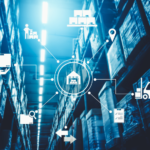Supply chains remain in the spotlight as companies face overlapping pressures from tariffs, climate disruptions, labor issues, and rapid technology adoption. Each week brings a mix of short-term shocks and long-term shifts that are reshaping sourcing, trade routes, and logistics strategies. This week’s supply chain news highlights how businesses are reacting—stockpiling ahead of tariffs, diversifying away from China, investing in resilience, and testing new digital tools like AI.
1. Stockpiling in North America Accelerates Amid Tariff Concerns
In August 2025, many U.S. manufacturers sharply increased their purchases of raw materials and components. The reason? Expectation of rising costs due to tariffs. According to GEP, this behavior has pushed up a measure of supply chain pressure to its highest in two and a half years in North America.
What this means: Buyers are trying to buy ahead of tariff-driven inflation. This can help hedge costs, but it may also lead to inventory overhang and cash flow stress.
2. U.S. Container Import Patterns Shift Amid Trade Policy Uncertainty
U.S. container imports rose modestly (1.6% YoY) in August to ~2.5 million TEUs. But underlying that number are signs of change: imports from China dropped sharply (≈10.8%), especially in aluminum, apparel, and footwear. Meanwhile, suppliers in Vietnam, India, Thailand, and Indonesia appear to be benefiting from the disruption.
Tariff policy is cited as a key factor. Even though there was a recent appeals court ruling calling many tariffs illegal, they remain in force pending higher court rulings, causing businesses to remain cautious.
3. India Ups Investments in Logistics Infrastructure to Build Resilience
Amid global supply chain disruptions, India is shifting more focus from pure efficiency to resilience. Increasing investments are being made in logistics infrastructure—roads, freight corridors, internal transport, warehousing—to better buffer against external shocks.
This is part of a broader trend: countries rethinking their supply chain posture given tariff volatility, geopolitical risk, and the need for more dependable internal supply transport.
4. AI & Tech: Tools Being Deployed to Mitigate Risk and Improve Visibility
-
Just-in-Time + AI: Some manufacturers (e.g. Toro) are resisting the instinct to overstock, choosing instead to use AI-based tools to monitor component prices, tariff announcements, and supplier performance. These tools help them make better timing decisions on purchases rather than overreact.
-
AI in Shipping / Container Industry: There’s growing momentum around using AI to optimize container shipping—such as forecasting congestion, routing, or automating decision making. But adoption is cautious, as firms balance data risks, customer relationships, and the potential cost of errors.
5. Top Risks in 2025: Climate, Geopolitics, Cyber, and Input Materials
Everstream Analytics and other risk bodies lay out a risk profile for global supply chains this year. Key risks include:
-
Climate disruption, especially floods and extreme weather, which account for a large share of recent supply interruptions.
-
Geopolitical instability — trade wars, sanctions, and shifting alliances continue to be a major source of disruption.
-
Cyber risks — supply chains remain vulnerable to cyberattack, especially via less visible suppliers.
-
Input scarcity — rare metals, minerals, and basic materials are under pressure due to supply constraints, regulatory changes, or export restrictions.
What These Trends Mean for Supply Chains
-
More buffer / safety inventory is likely, especially for critical inputs.
-
Diversification of sourcing is accelerating, shifting volumes to Southeast Asia, India, and nearshoring options.
-
Visibility and risk tools are becoming standard as firms seek proactive alerts and predictive insights.
-
Resilience has become a strategic objective, not just an operational task.
-
Ports and logistics networks are being reshaped by trade realignments and tariff-driven shifts in volumes.
What to Watch Next
-
Tariff and trade policy announcements.
-
Extreme weather events affecting key ports or inland routes.
-
AI adoption rates and ROI in container shipping.
-
Infrastructure expansion in emerging markets.
-
Growing demands for supply chain risk disclosure.

